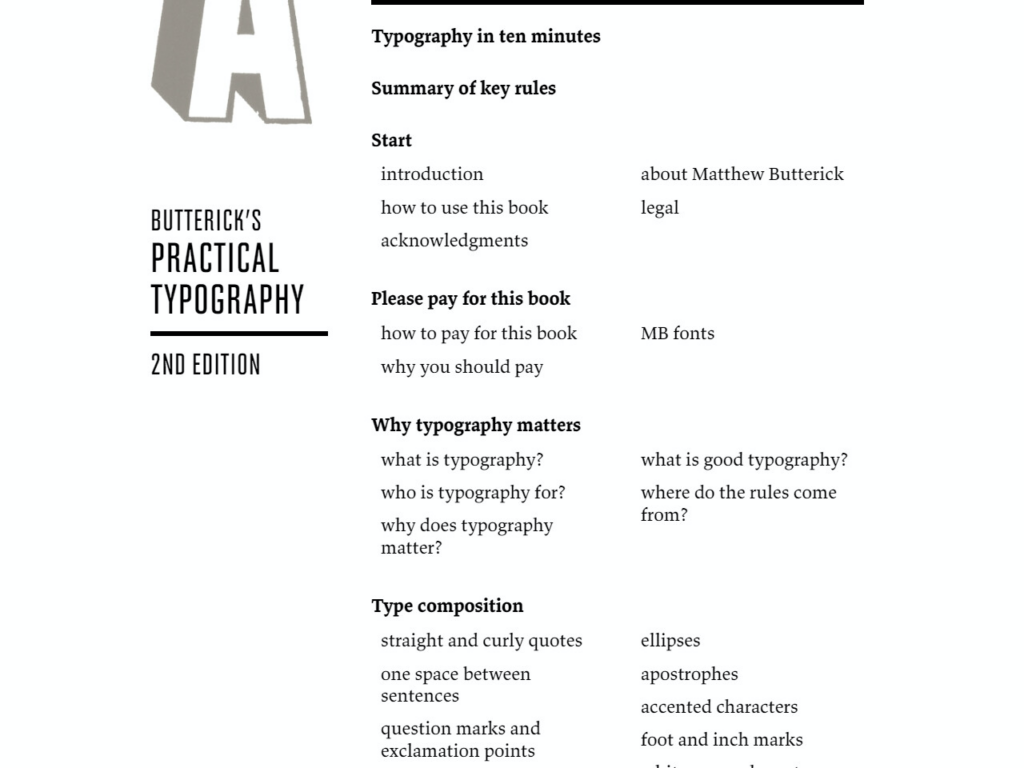Butterick's Practical Typography is considered one of the best resources for learning typography. Written by Matthew Butterick, a lawyer and typographer, this online book concisely covers typography's fundamental rules and best practices.
I recommend this book to anyone looking to improve their typography skills, whether you're a graphic designer or writer or want to create more professional-looking documents. Here are some of the main reasons why it's such an excellent guide:
Focuses on the Essentials
The book starts with a chapter called “Typography in Ten Minutes” that distills the core fundamentals into five key rules. Butterick boldly claims that if you learn and follow these rules, you'll be a better typographer than 95% of professional writers and 70% of designers. While that may sound boastful, the rules cover the typographic basics clearly and effectively.
Explains the Reasoning Behind the Rules
Butterick doesn't just state the rules; he takes the time to explain the rationale behind typographic conventions. Understanding why certain practices are recommended allows you to flexibly internalize and apply the principles rather than just following arbitrary rules without knowing why.
Covers Both Aesthetics and Technical Details
The book examines typography from a visual perspective and a practical, technical angle. So you'll learn artistic concepts like creating contrast, hierarchy, and consistency just as much as specific settings like font size, line length, and spacing.
Founded on Best Practices
Butterick has done extensive research to base his recommendations on proven best practices. As he says, the rules of typography come from “a few hundred years of type and typography,” establishing conventions through trial and error. So you can feel confident learning from an expert who knows the reasoning behind the rules.
Presented Concisely with Useful Examples
Despite the wealth of information, Butterick is remarkably concise and clear-cut in his writing. He gives specific, practical examples to illustrate his guidance. The book is meticulously organized to be skimmable and easy to reference later.
So, in summary, Butterick's Practical Typography offers an ideal starting point for learning typography by focusing on the fundamental rules, explaining the why behind conventions, covering both aesthetics and technical configuration, building on proven practices, and presenting the material in a focused, digestible way. I highly recommend designers or anyone working with type give it a read.
